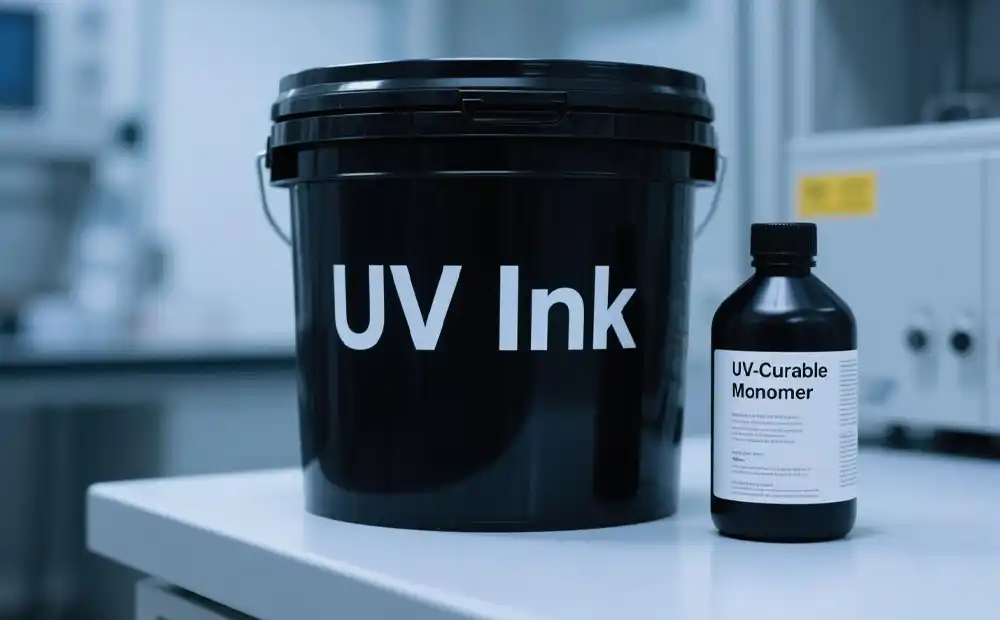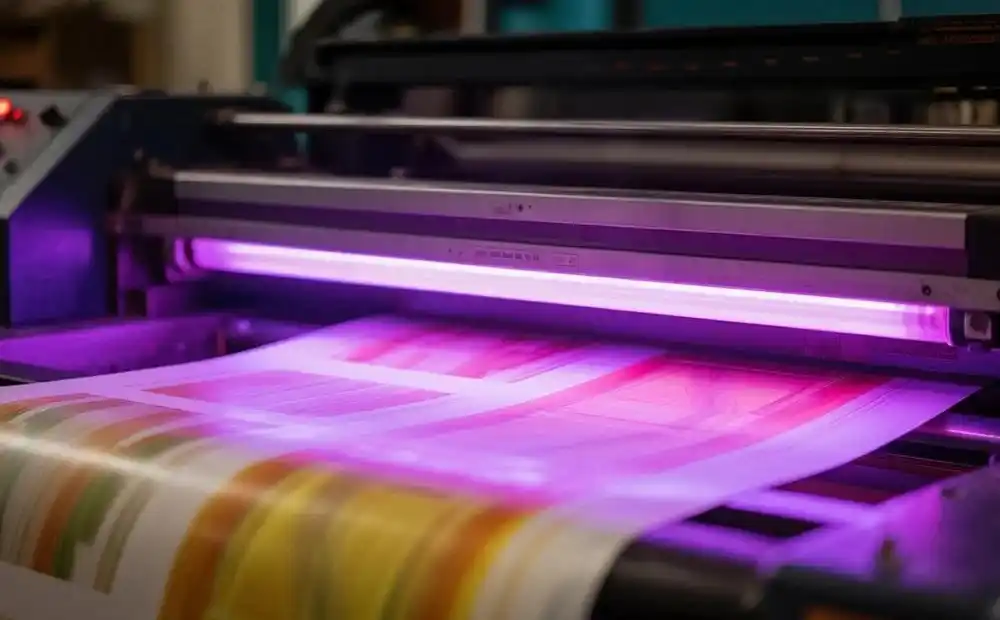How Do Monomer Selection and Polymerization Affect Migration in UV Inks?
Date: Jul 18 2025 From: Star Color Views:
In UV-curable ink systems, monomers form the foundational component of the ink film. Under UV light irradiation, they undergo polymerization reactions, forming a robust cross-linked film with other components. However, these monomers—especially the incompletely reacted portions—are precisely the primary source of ink migration, which is particularly critical in the packaging fields of food, pharmaceuticals, and cosmetics.
To develop truly low-migration UV inks, it is essential to understand the relationship between monomer types and polymerization mechanisms.
1. What Are Monomers in UV Inks?
Monomers in UV inks are primarily low-molecular-weight acrylate or methacrylate compounds. From a chemical structure perspective, these compounds contain unsaturated double bonds (carbon-carbon double bonds) in their molecules, which are the core sites for polymerization reactions.
Their roles in inks include:
- Endowing inks with flexibility, adhesion, fluidity, and other properties;
- Participating in free radical polymerization reactions together with photoinitiators under UV light;
- Forming stable ink films after polymerization.
Monomers can be classified into:
- Monofunctional monomers: Containing only one polymerizable double bond in the molecule, with typical representatives such as isobornyl acrylate (IBOA). Due to their single reactive site, these monomers can only form linear or low-branched polymer chains during polymerization, offering good flexibility but slower reaction rates and difficulty in forming high-density cross-linked structures.
- Multifunctional monomers: Containing two or more polymerizable functional groups, such as trimethylolpropane triacrylate (TMPTA, with 3 acrylate groups), pentaerythritol triacrylate (PETA, with 3), and tripropylene glycol diacrylate (TPGDA, with 2). Multifunctional monomers can form highly cross-linked network structures during polymerization, with faster reaction rates, helping to enhance the hardness, wear resistance, and chemical stability of the ink film.

2. Why Do Monomers Cause Migration Issues?
The reason why incompletely polymerized monomers become the main source of migration is closely related to their molecular characteristics and packaging environments.
From a molecular perspective, unreacted monomers typically have a molecular weight between 200-500, with small molecular volume, moderate polarity, and certain volatility. This enables them to easily overcome intermolecular forces and diffuse from the interior of the ink film to the surface. In packaging scenarios, such migration is mainly achieved through three pathways:
- Penetrating the packaging material;
- Migrating into food or pharmaceuticals in a gaseous phase;
- Occurring as back migration (set-off) during stacking.
From a regulatory perspective, some monomers have been explicitly restricted. For example, EU Regulation EU 10/2011 sets strict specific migration limits (SML) for migrating substances in food contact materials. Among them, the SML for 1,6-hexanediol diacrylate (HDDA) is 0.05mg/kg, and isobornyl acrylate (IBOA) is classified as "restricted use" due to insufficient toxicity data. This means that in UV inks for food packaging, the residual amounts of these monomers must be strictly controlled.
3. How to Select Appropriate Monomers?
High-molecular-weight monomers:
- Large molecular volume, low migration;
- Low volatility, good stability after polymerization;
- Often used in low-migration formulations, such as EO/PO-modified acrylates.
Monofunctional monomers:
- Low polymerization efficiency, high possibility of residue;
- High migration risk, not suitable for food packaging.
Multifunctional monomers:
- Fast polymerization rate, helping to form a highly cross-linked network;
- Can effectively "lock" other small molecules;
- Typical representatives include TMPTA (with three acrylate groups).
Monomer reactivity:
- Higher reactivity means easier participation in polymerization and less residue;
- Monomers with low reactivity tend to form residues, increasing migration risk.
4. How Does Polymerization Affect Migration?
UV curing is not just a drying process but a chemical cross-linking reaction. If the reaction is incomplete, the monomer residual rate increases, and the migration risk rises accordingly.
Factors affecting polymerization reactions include:
- UV irradiation energy (intensity × time);
- Type and dosage of photoinitiators;
- Oxygen inhibition: Oxygen in the air can interfere with polymerization;
- Ink film thickness: Thicker films are harder to fully cure.
Only with sufficient polymerization can truly low migration be achieved.
5. Best Practices for Achieving Low Migration
To formulate truly low-migration UV inks, it is recommended:
- Select high-molecular-weight, multifunctional, low-volatility monomers;
- Use efficient, non-migrating photoinitiators;
- Avoid using monomers known to have high migration, such as IBOA and HDDA;
- Install a nitrogen protection system (inerting) in UV curing machines to prevent oxygen inhibition;
- Verify formula compliance through simulated migration tests (using food simulants such as ethanol and olive oil).
6. StarColor's Low-Migration Ink Strategy
At StarColor, we ensure migration safety from the source:
- All UV inks select low-migration monomers and explicitly contain no prohibited ingredients;
- Adopt an optimized photoinitiator system to ensure complete curing;
- All formulations undergo migration testing by third-party laboratories;
- Provide complete regulatory documents, compliance statements, and technical support.
Our goal is to provide customers with safe, stable, and compliant high-performance UV printing solutions, especially suitable for sensitive packaging scenarios.

Conclusion
In UV ink systems, monomer selection and polymerization efficiency determine the final migration performance of inks. If the monomers themselves have high migration properties or the polymerization process is improperly controlled, even the best printing systems cannot guarantee food safety.
Through the scientific selection of high-molecular-weight, highly reactive monomers, combined with comprehensive curing control and compliance testing, StarColor can help customers meet the strictest regulatory requirements and achieve truly low-migration packaging printing.
 RU
RU
 EN
EN
 CN
CN


